How To Use Alcohol in The Kitchen (Beyond Making Cocktails)
Wines, liqueurs, spirits: they are good to drink on their own, they are even better in cocktails. But did you know that this is not the only use you can make of them in the kitchen? In fact, alcoholic beverages, if balanced in the right way, can become precious ingredients to create dishes with a stronger flavour and a more intense character. Here are the best ones for cooking and which ingredients to pair them with.
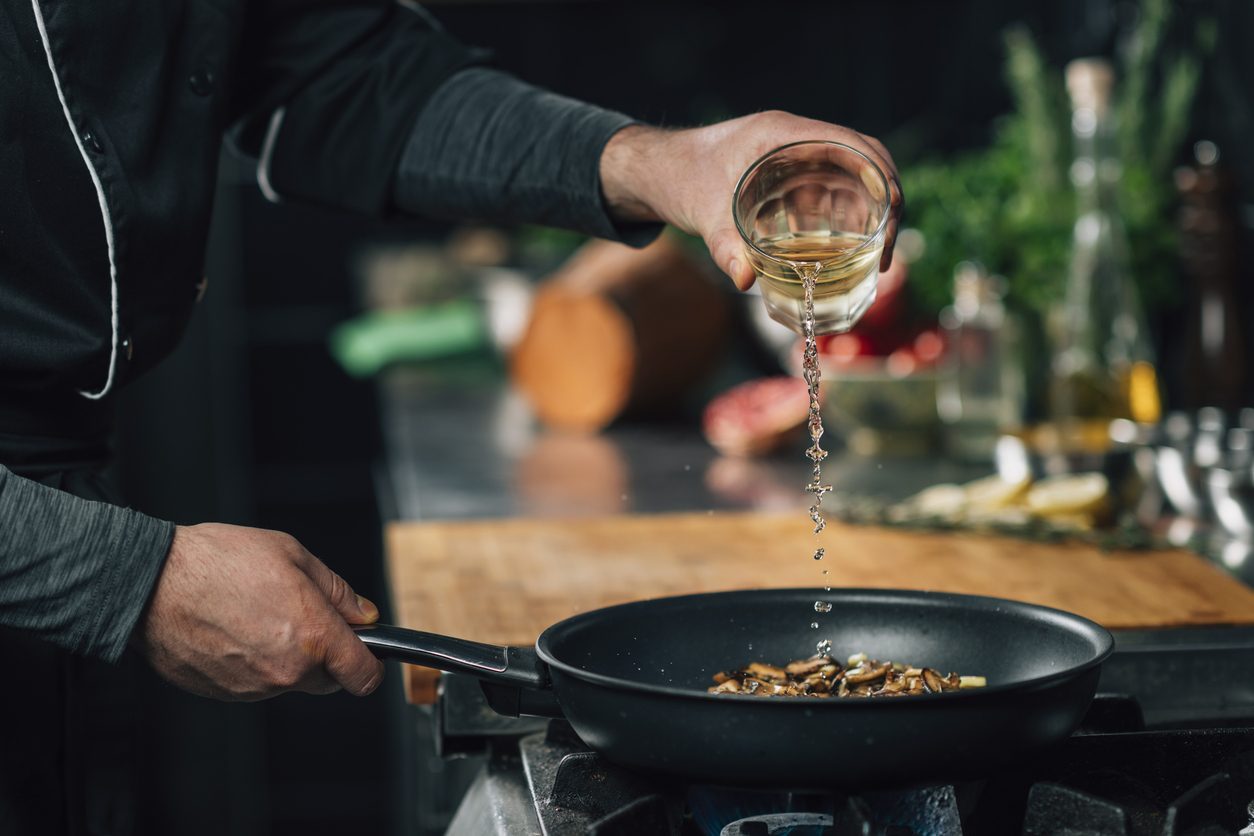;Resize,width=742;)
Alcoholic beverages are famous and loved as drinks in themselves, or to be used to create special cocktails that have become real must-haves in the world of beverages. What you may not know is that alcoholic beverages are also very versatile in the kitchen: the alcohol in them, in fact, is able to particularly enhance the organoleptic characteristics of many ingredients, strengthening their flavor and adding a truly unique final aroma. If you know how to measure the quantities well and learn to make the right combinations, alcoholic beverages can be a real ally in giving character to your recipes. Not only that: even those who don't like drinking can indulge in these "alcoholic" dishes, because cooking eliminates the alcohol leaving only an aromatic trace. Here is a guide on which are the best alcoholic beverages for cooking and which ingredients they should be paired with.
1. Brandy
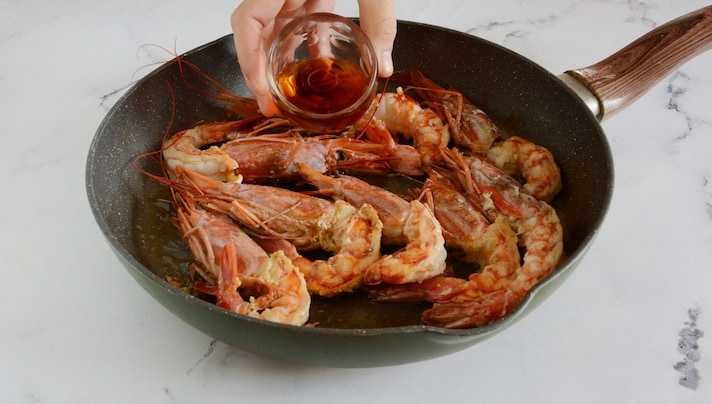
Obtained from the distillation of wine, brandy is a very strong spirit originating from southern Europe, particularly Italy and Spain. It is also obtained from the juice of other fruits, not just grapes, and for this reason it is quite easy to use in the kitchen: you can do everything with brandy, especially the preparation of desserts, sauces, consommé and flambée, but thanks to its important structure it also goes well with savory recipes, for example with meat, fish and shellfish and in pasta sauces.
2. Rum

Exotic, rich in flavor, iconic and collectively associated with the world of pirates and privateers, rum is one of the most famous and beloved spirits in the world. Extracted from cane sugar plantations, from the pressing of which molasses is obtained which is left to ferment and crystallize and then subsequently treated, rum is very well suited to use in the kitchen due to its sweetish characteristics. In particular, precisely because of its sweetness, it is usually used in desserts (it goes less well with main dishes), especially in those with cocoa desserts and in those in which cane sugar itself is present. Among the most famous examples of rum-based desserts stand out the Tiramisu and the famous Neapolitan babà.
3. Cognac

Cognac is also a particularly suitable distillate for the preparation of desserts: the French drink, in fact, is famous for its hints of vanilla, wood and honey that vary in intensity based on the degree of toasting of the barrels in which it was left to age. These organoleptic nuances make cognac ideal for desserts made with bitter cocoa, honey or spices such as cinnamon and cloves. In this case, however, cognac is also good for enhancing certain meats, especially game and shellfish such as shrimp: in addition to adding flavor, in fact, the spirit manages to cleanse the mouth of fats and overly intense flavors.
4. Vodka
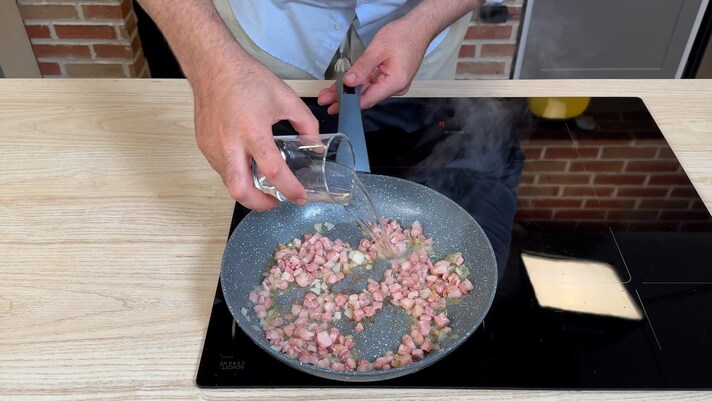
We are sure that, at least once in your life, you have tasted a plate of vodka penne pasta. The first, a true must of the 80s that occasionally comes back into the limelight, is the perfect example of how much the spirit from Eastern Europe is used in cooking. Of all of them, in fact, vodka is perhaps the most used alcoholic beverage for cooking: from first courses to desserts, there are numerous combinations of this alcoholic beverage with a transparent color and a pungent flavor. In particular, vodka goes very well with fish dishes, to which it gives a delicate and unmistakable flavor, especially with very tasty foods such as caviar, salmon, smoked trout, herring in oil or lobster.
5. Port
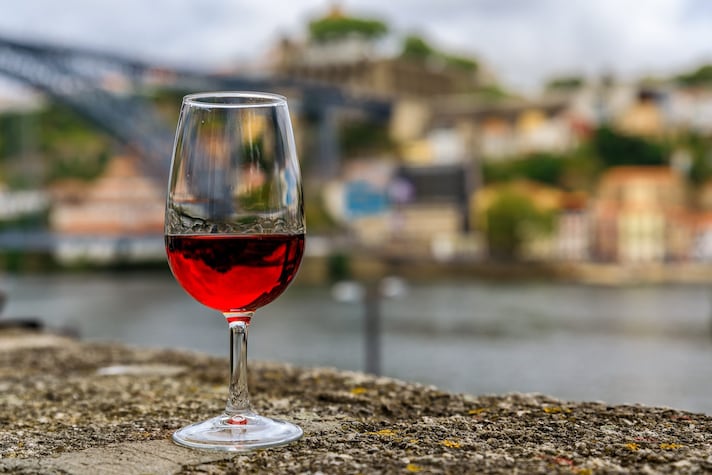
Port is one of the most famous fortified wines of all, a true excellence that comes from the Douro Valley located east of the city of Porto in the north of Portugal. Characterized by an unmistakable, sugary and velvety flavor, Port is not only an excellent after-dinner drink but is also excellent as an ingredient in the preparation of numerous dishes, in particular it goes well with all tasty and strong-flavored foods. Cod is a delicious example: this particularly tasty and intense fish lends itself perfectly to being blended with a generous glass of Port. Port is also excellent for blending and flavoring meat and other types of fish, even if it gives its best with desserts: it is no coincidence that some of the most famous Portuguese desserts contain Port, in particular the famous pudding called pudim abade de Priscos.
6. Sherry
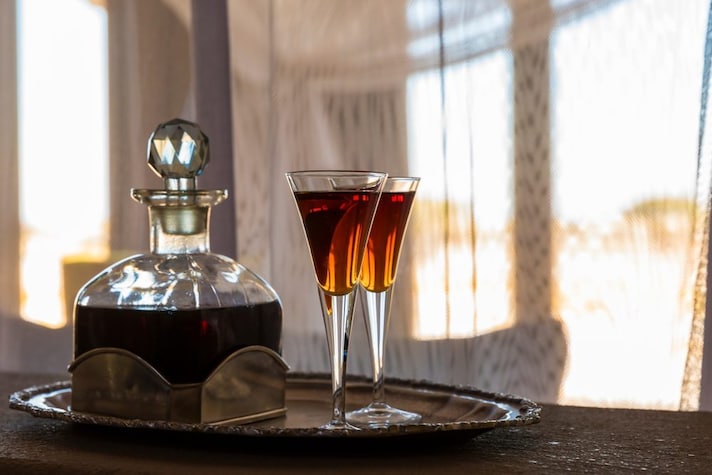
Originally from Spain, specifically from Jerez de la Frontera, sherry is a very sweet fortified wine with a not particularly high alcohol content. The organoleptic qualities of sherry are widely exploited in cooking, where its pleasant aroma is used to flavor meat or fish dishes, especially shellfish such as lobster, more delicate preparations such as liver pâté and a whole series of sauces for which the liqueur becomes the base. The ideal pairing for sherry remains with desserts due to its sweetish flavour, for example it is added to creams to be used as a filling or garnish, or to cake, donut and sponge cake doughs.
7. Ratafia
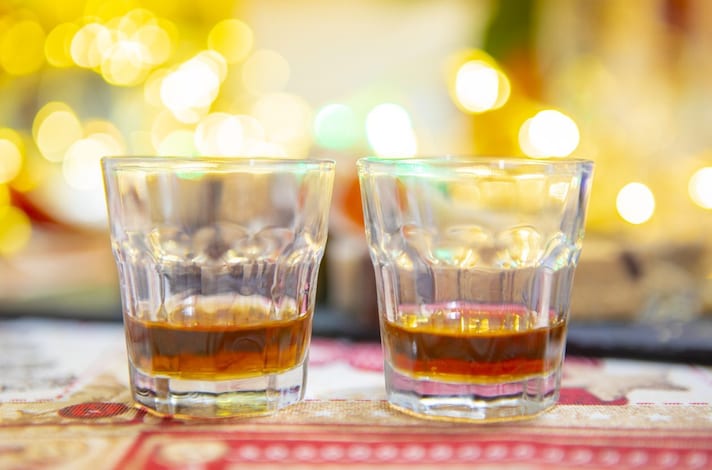
It is less known than the liqueurs we have listed so far, but it is used much more in cooking than you might expect. Ratafià is a particular liqueur that is produced mostly in Piedmont, Valle d'Aosta and Abruzzo, but it is also widespread in Catalonia (Spain) and France (especially in the north-east, in the regions of Champagne and Burgundy, both large producers of wines and liqueurs); it is created using ripe black cherries, red wine, natural flavors, sugar and small quantities of alcohol. Sweetish and sugary, with a low alcohol content, ratafià has a characteristic flavor of berries that makes it ideal for cooking red meats or to combine with all those recipes that require the use of fresh and creamy cheeses. Precisely for this reason it also lends itself to being used as a flavoring in recipes with similar characteristics, for example in the dough of a delicious cheesecake.
8. Whiskey
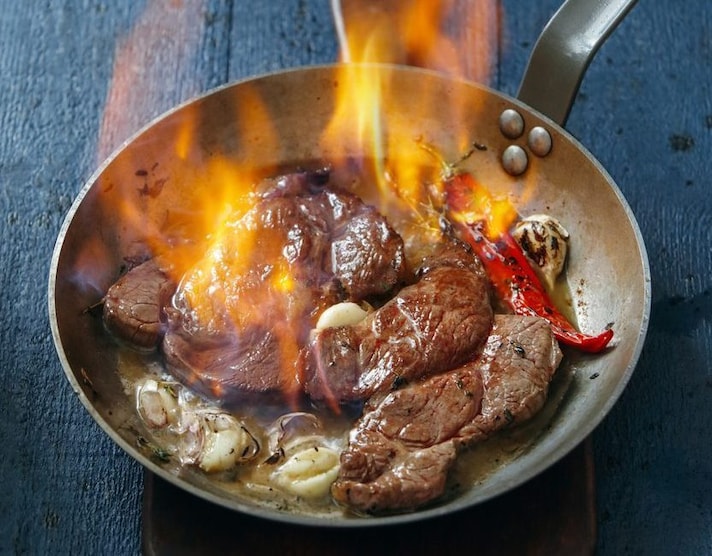
We close our overview with whisky, an alcoholic beverage that is much loved as a drink but is not among the most recommended for cooking because it requires a certain amount of experience both in terms of pairing and dosage: its particularly intense and spicy flavor, in fact, does not go well with all foods but only with those with an equally strong flavor and you need to use very little, because just exaggerating the quantity is enough to ruin the whole recipe. Whisky usually goes rather well with the spicy and intense flavors of oriental cuisine, for example it enhances dishes such as soy spaghetti with shellfish or fish and meat flavored with the mix of spices known as masala, but if you pay a little attention you can also use it to flavor pasta dishes or to marinate meat. Whisky also lends itself to the creation of various desserts, especially those made with chocolate, ginger, cinnamon and fruit.
;Resize,width=767;)

;Resize,width=712;)

